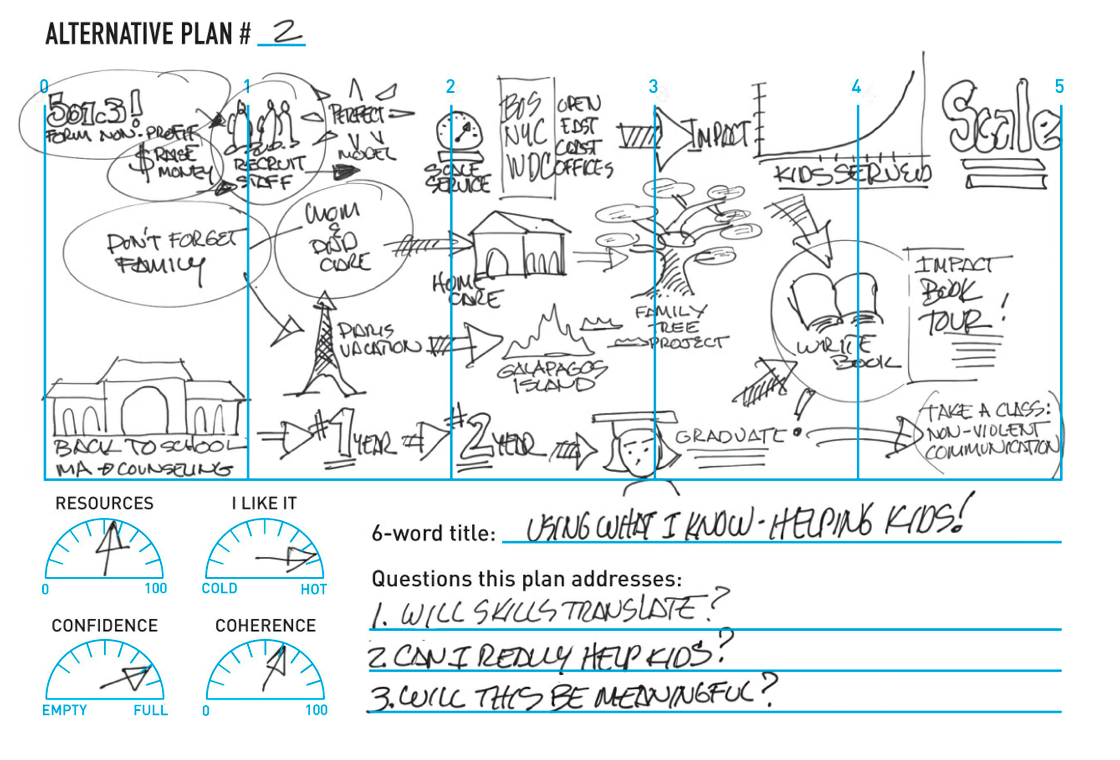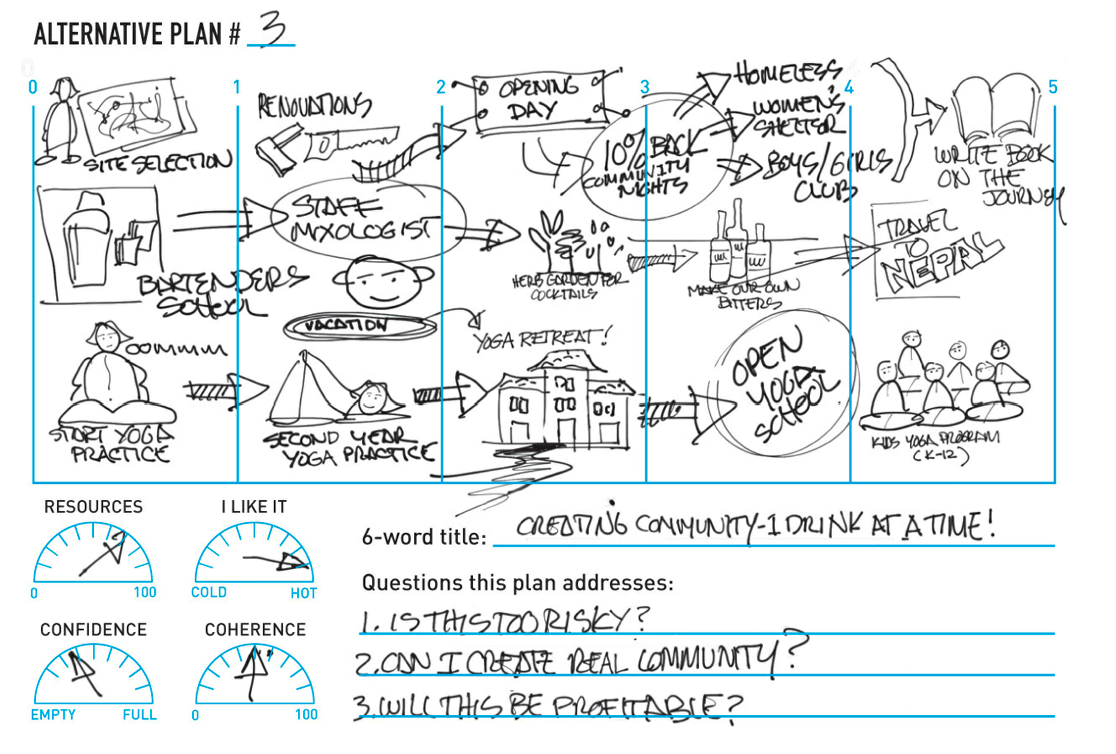Unlike the traditional five-year plan, which assumes a single, linear path, the Odyssey Plan embraces the idea that life can unfold in various directions. By exploring three distinct scenarios for your future, you can expand your perspective, align your goals with your values, and prepare yourself to adapt to unexpected changes.
What Is an Odyssey Plan?
Developed by Bill Burnett and Dave Evans in their book Designing Your Life, the Odyssey Plan is built around the idea that your future is not set in stone. Instead of limiting yourself to one version of what lies ahead, this method encourages you to map out three different five-year plans:
- Your Current Path: The trajectory you are already on, assuming nothing major changes.
- An Alternative Scenario: A path you would take if your current plan became unavailable.
- The Unconstrained Vision: The dream scenario you’d pursue if resources like time and money were unlimited.
Each plan represents a potential version of your future, helping you visualise what’s possible and evaluate your options with a sense of purpose.
Step 1: Mapping Your Current Path

The first step in Odyssey Planning is to sketch out your current path. This is the life you’re already living or the plan you’re currently working toward. For example, if you’re a teacher, your current path might involve continuing to develop your teaching career, attending professional development courses, and possibly moving into a leadership role within your school.
Example: Jane is a graphic designer who’s been working for a mid-sized agency for five years. Her current path includes advancing to a senior designer role, expanding her portfolio, and possibly managing a team.
Step 2: Exploring an Alternative Scenario

The second plan considers what you might do if your current path were no longer an option. This is about thinking outside the box and imagining a scenario where you pivot to something different. It could be a backup plan or a chance to explore an interest you’ve been curious about.
Example: For Jane, the alternative scenario could involve leaving her agency to start her own freelance business. This plan might include building a client base, specialising in branding, and working on projects that align with her personal values.
Step 3: Dreaming Up Your Unconstrained Vision

The third plan is where you let your imagination run wild. What would you do if there were no barriers? This exercise helps you connect with your deepest passions and desires, even if they seem impractical at first glance.
Example: Jane’s unconstrained vision might involve moving to a tropical island to run a small boutique that combines her love of design and sustainable living. She might envision spending her days creating artwork and hosting workshops on eco-friendly design.
Step 4: Evaluating Your Plans
Once you’ve mapped out the three five-year plans, it’s time to evaluate them. For each scenario, ask yourself the following questions:
- How much do I want this?
- What resources will I need to make it happen?
- What are the biggest challenges I’ll face?
- How aligned is this plan with my values and goals?
Assign each plan a level of confidence and desirability. This step helps you gain clarity about which paths feel the most exciting and feasible.
Step 5: Taking Action
The beauty of the Odyssey Plan is that it doesn’t lock you into a single direction. Instead, it empowers you to start experimenting with small actions that align with your chosen paths. This might involve:
- Taking a course to explore a new interest.
- Networking with people who are living a version of one of your plans.
- Saving money to fund a potential pivot.
By testing out parts of each plan, you can gather insights and refine your vision over time.
Why the Odyssey Plan Works
The Odyssey Plan works because it recognises that life is rarely predictable. By exploring multiple futures, you give yourself the freedom to adapt and grow. This approach also reduces the pressure of feeling like you need to have everything figured out. Instead, it’s about staying curious and open to new possibilities.
Your Next Steps
To create your own Odyssey Plan, grab a notebook or a few sheets of paper and dedicate some time to visualising your three five-year scenarios. Don’t worry about getting everything perfect. The goal is to explore, reflect, and start taking small steps toward a life you truly love.
As Burnett and Evans remind us, designing your life is an ongoing process. By revisiting and revising your Odyssey Plan regularly, you can stay aligned with your goals and make informed decisions about the journey ahead.